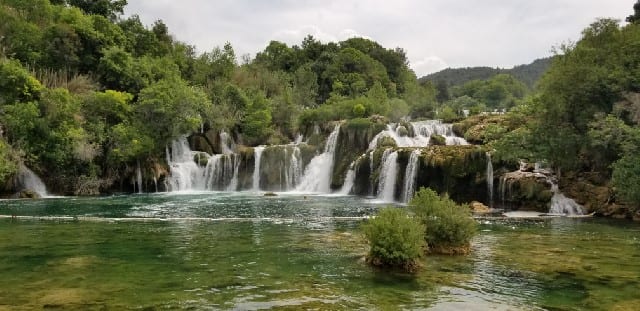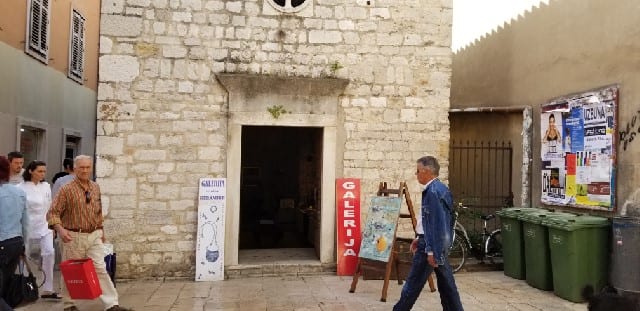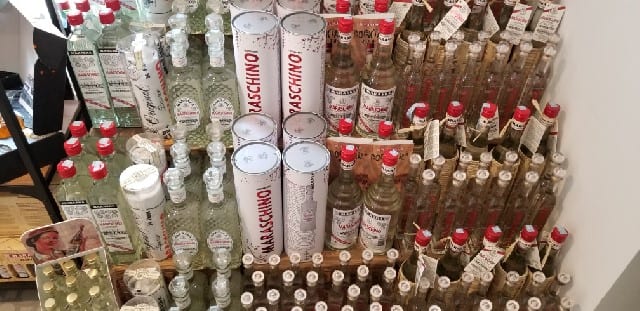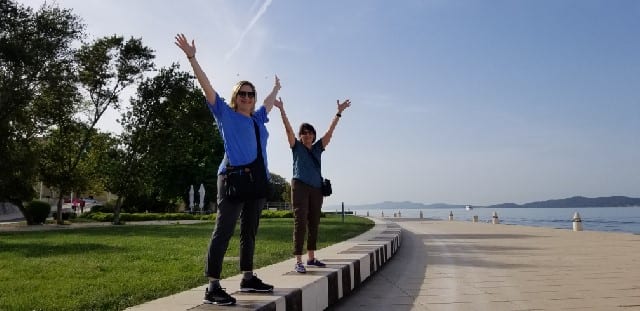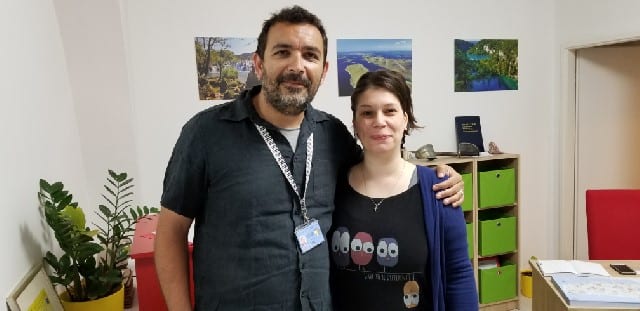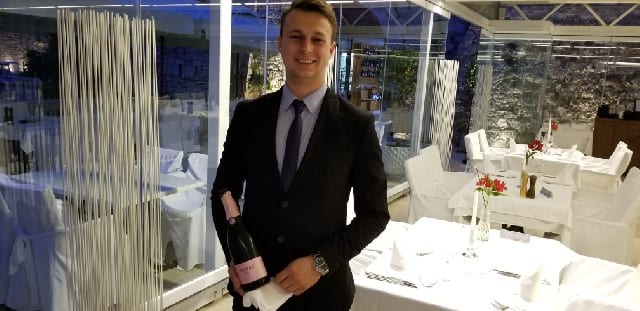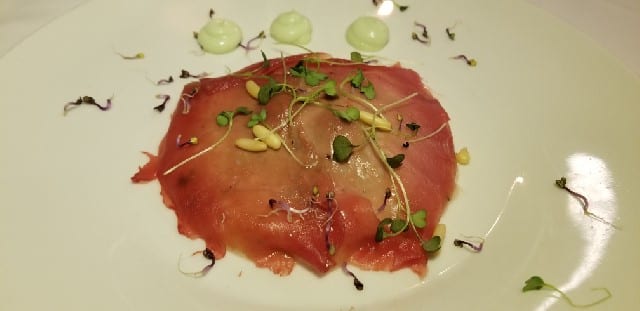

23 Aug Cruising in Croatia Part 2
Our journey up the coast of Croatia started in Dubrovnik. About halfway up the coast we hit Split, the second largest city in Croatia. It was from Split that part 2 of my story begins that originally ran in ATOD Magazine.
Beaches, Roman ruins, trendy cafes and boutique shops greeted us in Split, the second largest city in Croatia. Split is in the center of Dalmatia and home to the third largest port in Europe, after Athens and Naples and where our cruise up the coast of Croatia continues.
SPLIT | What To Do
Take a tour of Diocletian’s Palace. The palace was built by the Roman Emperor in 4th century AD. The ancient fortress has become the old town of Split and you can wander the narrow streets to find shops and restaurants.
Split has a really inventive way to explore the city: a scavenger hunt. We were given a list of things to find and take photos of and in the process get a unique take on the region. Initially, I thought that this seemed a bit silly but as we started doing it, we realized how much we were really exploring the town. We paid more attention to small details, spoke to locals, and had a lot of fun.
If you are in Split, see if you can:
- Find the biggest fisherman’s hook in town
- Find the found shaped like a hand
- Find at least one symbol of the local soccer team Hajduk
- Find the national theater
- Find an image of Sigmund Freud
- Find the replica of Saint Mark’s Square
- Find the screaming naked women
- Find the lion relief that is pouring water
- Find the sphinx in the wall
- Find the plaque of the famous tennis player Goran Ivanišević
- Find the fish market
- Find the image of the last western Roman Emperor Julius Nepos
Want to grab some food and drink?
Just outside the old town is Konoba Kod Joze. It’s tucked off of a small street. This affordable local spot serves fresh seafood and it’s worth the stop.
For a glass of wine, or a flight of wine, head to Paradox Wine Bar. Opened in 2012 and the first wine bar in Split, there are now many, but Paradox Wine Bar, located a few feet from the harbor, offers a selection of the best wines from across Croatia.
To satisfy your sweet tooth, head to the popular local spot Luka for homemade ice cream.
KRKA NATIONAL PARK
Located on the island of Primosten, Krka National Park is home to seven waterfalls. Walking paths allow you to stroll through the lush forest of the park. Krka National Park is one of eight national parks in Croatia and is the second most visited park in the country. Expect lots of crowds when you visit as the park gets 10,000 visitors each day.
ZADAR
With a 3000-year-old history, Zadar was founded by the Ilyrians 27 years BC and is the oldest continuously inhabited Croatian city. Located in the middle of the Adriatic Sea, Zadar was bombed during World War II and lost close to 70% of its architecture. Today, ruins of the Roman Forum still stand and the long pedestrian street Kale Larga is filled with shops, restaurants and churches. Inside one old church, Saint Andrews, is a shop with local artisanal items and the 11th century St Laurence Church is hidden in the back of the Lauren Café Bar on the main square. Stop by Gligova Cheese shop, a 4th generation cheese company, to try Pag cheese and other Croatian cheeses. And the original Maraska factory is in Zadar so make sure to pick up a bottle of Maraschino Liqueur at a local store.
The sea promenade has been rebuilt and is home to the Sea Organ, 35 pipes of different lengths and shapes with whistles on the end. Tuned to five tones, seven different chords are created by the movement of the water. There is also the Sun Salutation, a 27-meter circle made up of 300 solar panels. It is powered by the sun and at night various colors light up like a video game.
To get an insider visit to Zadar, book a 100-minute daily walking tour with Šime and Ana Botica of Art and Nature Travel. There is no need to book in advance as they offer their small group tours at 10am, 12pm and 6pm daily. They are available for wine tours, full day tours and private tours as well.
Want to grab a bite?
Foša Restaurant is a 60-year old restaurant located in the old Venetian toll office at the entrance of the old city. The dining room at Foša has glass windows that look out at the old harbor. The menu at Foša centers on “new” Croatian cuisine, playing with Mediterranean flavors while raising the bar on Croatian cuisine.
MALI LOŠINJ
Known for its large natural harbor with a broad promenade lined with Mediterranean town houses, the island of Mali Lošinj is home to more than 150 dolphins. With more than 2500 hours of sunshine each year, it is one of the sunniest islands after Hvar. This is the island to come to if you want to go cycling, hiking, camping, windsurfing or dolphin watching.
PULA
Pula is a seafront city on the tip of Croatia’s Istrian Peninsula that looks out towards the Veneto in Italy. As we approached Pula from the sea, we first saw an industrial shipyard, but soon after the grand amphitheater was in view. The Roman Amphitheater is only one of six that is well-preserved and still has the outer rings, such as the Coliseum and Verona in Italy, Jem in Tunisia and Nîmes and Arles in France. The city of Pula was built on a hill, separate from the amphitheater.
Hungry?
Located outside of the Roman center, approximately a 10-minute taxi ride, Farabuto is located in a residential neighborhood. This friendly, casual restaurant serves local Istrian dishes and fresh fish caught that day out in the Adriatic.
ROVINJ
The old city of Rovinj is located on a rock with the Church of St. Euphemia, Rovinj’s patron saint, at the top. After taking in the magnificent views from the top of the hill, it is easy to get lost wandering down the snaking cobblestone streets lined with boutiques and restaurants. If you can pull yourself away from the shops filled with artisan products, head past the local fishermen’s Central Harbor to find Gelateria Italia for delicious gelato.
ZAGREB
Along the cruise (see Cruising Through Croatia, Part 1) up the coast of Croatia, we docked in Porec and we took a three-hour drive to Zagreb, the capital city of Croatia. Zagreb is a beautiful city with great energy. The old part of the city is in the upper town, which can be reached by stairs or by a funicular. You can then wander down the cobblestone streets to the newer part of the city where the cafes are filled with locals.
Hungry?
Located amid lush greenery at the edge of Tuškanac Park, a 10-minute walk from the main square in the upper town, Dubravkin Put is a regarded as Zagreb’s best seafood restaurant. The large dining room is spacious with white textured walls, white linen tables and grey linen covered chairs. The menu features local ingredients with a more international approach and the wine list, while international in scope, has an incredible selection of Croatian wines. It was an exquisite final meal for our journey up the coast of Croatia.
All in all, Croatia may be one of Europe’s hottest destinations but there is still so much to explore. Whether you want to be active or relax, travel up the coast of Croatia, soak in the beauty of the county and eat, drink, swim, or hike to your hearts content.
Read the original story in ATOD Magazine.











